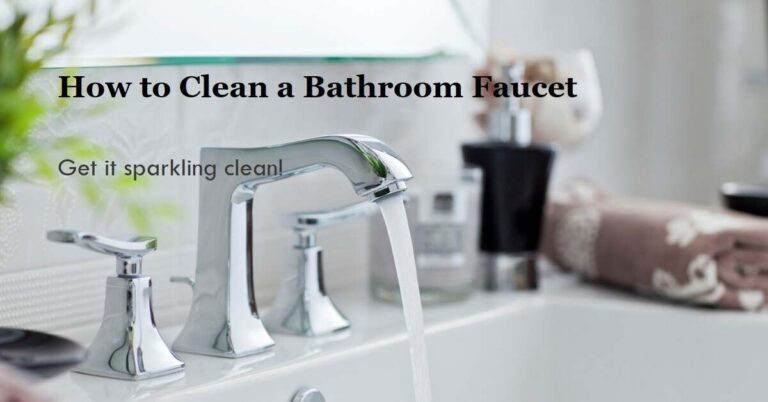Cleaning a bathroom can be daunting, especially when faced with stubborn stains and grime. While traditional cleaning methods often involve harsh chemicals and strenuous scrubbing, a steamer is more efficient and eco-friendly. This article will explore how to clean a bathroom effectively using a steamer, providing a step-by-step guide to achieving a sparkling clean bathroom without harmful chemicals.
Why Use a Steamer?
Before diving into the cleaning process, let’s understand why a steamer is an excellent tool for cleaning bathrooms. A steamer utilizes the power of hot steam to sanitize and remove dirt and grime from various surfaces.
It is an eco-friendly option that eliminates the need for harsh chemicals while being highly effective at tackling tough stains. Additionally, steam can reach into crevices and tight spots that are often challenging to clean with traditional methods.
Gather Your Cleaning Supplies
To begin your bathroom cleaning adventure with a steamer, you’ll need a few essential supplies:
Steam cleaner: Choose a high-quality steam cleaner specifically designed for home use. Look for one that includes various attachments suitable for different surfaces in your bathroom.
Microfiber cloths: These soft and absorbent cloths are ideal for removing dirt and moisture. They are also reusable and gentle on surfaces.
Cleaning brushes: Select a few brushes with different bristle types and sizes to tackle different areas and surfaces. Nylon brushes work well for tiles and grout, while softer brushes are better for delicate surfaces.
Water: Fill the steamer’s reservoir according to the manufacturer’s instructions. Distilled water is recommended to prevent mineral buildup.
Step-by-Step Guide to Cleaning with a Steamer
Now that you have your supplies ready let’s delve into the step-by-step process of cleaning your bathroom with a steamer:
1. Preparation
Start by removing items from the bathroom surfaces, such as toiletries, rugs, and towels. This will give you easy access to all areas and prevent them from getting wet.
2. Ventilation
Ensure proper ventilation in the bathroom by opening windows or turning on the exhaust fan. This will help dissipate the moisture generated by the steam.
3. Spot Test
Before using the steamer on sensitive surfaces, perform a spot test in an inconspicuous area to ensure it doesn’t cause any damage or discoloration.
4. Begin with the Tiles and Grout
Attach the appropriate brush to the steamer and start by focusing on the tiles and grout lines. Move the steamer across the surface, allowing the hot steam to penetrate and loosen the dirt.
Use a nylon brush to agitate the grout, followed by wiping it with a microfiber cloth.
“Pro Tip: For stubborn grout stains, consider using a steam cleaner with a grout cleaning solution for optimal results.”
5. Tackle the Shower
Switch to an attachment suitable for shower surfaces like glass doors or acrylic panels. Move the steamer in a back-and-forth motion, targeting areas with soap scum and mineral deposits.
You can use dryer sheets power for glass shower doors to prevent future buildup. Wipe the surfaces with a microfiber cloth to reveal their natural shine.
6. Clean the Toilet
To clean your toilet with a steamer, start by removing the seat and lid. Steam the exterior surfaces of the toilet bowl, tank, and base, making sure to reach into all the nooks and crannies.
Consider using a rubber toilet ring instead of a wax ring for an extra thorough clean. The hot steam will effectively remove stains and eliminate bacteria.
Use a brush to scrub any stubborn areas, and don’t forget to steam the inside of the bowl.
7. Addressing the Sink and Countertop
Attach a suitable brush to the steamer and focus on the sink and countertop surfaces.
Steam away soap residue, toothpaste stains, and other grime. Pay attention to the faucet, handles, and drains.
Use a soft brush to clean these areas thoroughly. Once steamed, wipe the surfaces with a microfiber cloth for a pristine shine.
8. Take on the Floors
Steam cleaning is also highly effective for bathroom floors. Whether you have tiles, vinyl, or laminate, a steamer can remove dirt, stains, and even urine stains.
Move the steamer back and forth across the floor, paying extra attention to high-traffic areas. Use a nylon brush to agitate and remove any remaining dirt for grout lines.
Finish by wiping the floor with a microfiber cloth.
9. Finishing Touches
After steam cleaning the major surfaces, it’s time to address the finishing touches. Steam clean the mirrors, windowsills, and any other glass surfaces in the bathroom.
Consider using dryer sheets to prevent drip marks on the bathroom walls for an extra shine. Don’t forget to wipe down light fixtures and any other fixtures or accessories in the bathroom.
10. Maintenance and Tips
Regular maintenance is key to keeping your bathroom clean and fresh. To maintain a sanitary environment, consider incorporating steaming into your cleaning routine once or twice a month. Remember to empty and clean the steamer after each use, following the manufacturer’s instructions.
By using a steamer, you can efficiently clean your bathroom without the use of harsh chemicals. The power of steam combined with the right attachments and techniques can tackle even the toughest stains and grime, leaving your bathroom sparkling clean and sanitized.
Remember, always refer to the specific instructions provided by the steamer manufacturer, and be cautious when working with hot steam. Proper care and technique make a steamer your go-to tool for maintaining a pristine bathroom.
So, why not give it a try? Explore the benefits of steam cleaning and transform your bathroom cleaning routine into a hassle-free and eco-friendly experience.
Related Pages:
- Can a Clogged Toilet Cause a Leak?
- Are All Toilet Bolts the Same Size?
- Are All Shower Valves the Same Size?
- How to Clean Acrylic Shower Doors
Happy steaming and happy cleaning!


